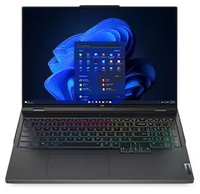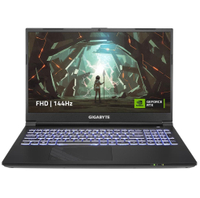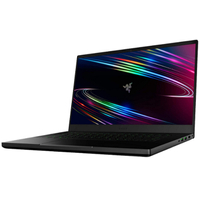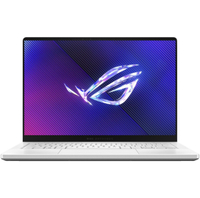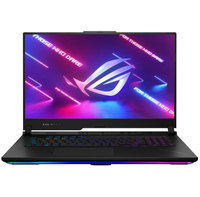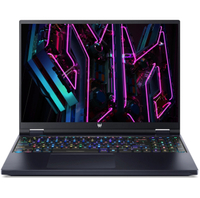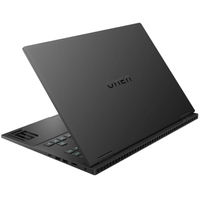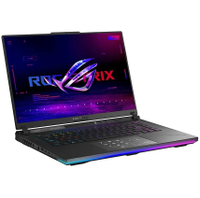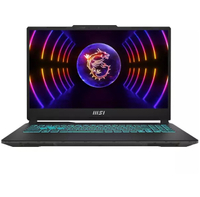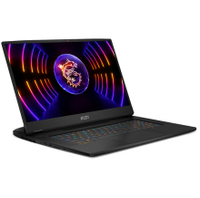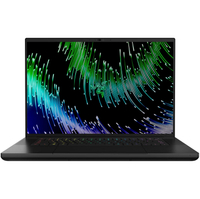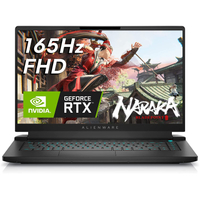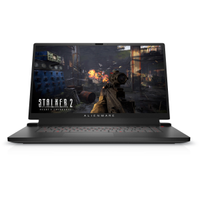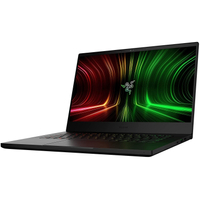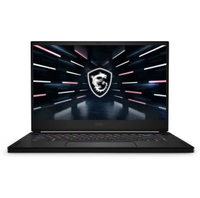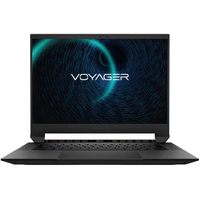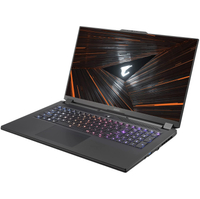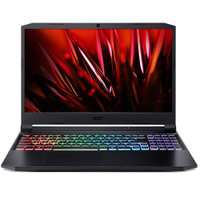Best gaming laptops in 2024: I've had my pick of portable powerhouses and these are the best
Don't compromise on power or portability with the best gaming laptops.
We've been testing the best gaming laptops, digging deep into the latest flavors of AMD processor and Nvidia graphics silicon, and we know which notebooks sing and which are just tone deaf. We're not just talking about sleek, expensive new machines, either, we've picked a range of gaming laptops at different price points to highlight which give you the best bang for buck and which are just outright awesome.
The current generation of mobile GPU and CPU are now established, offering the best Nvidia, AMD, and Intel has to offer, and Intel's Meteor Lake and Raptor Lake Refresh machines are starting to filter out, too. I've already tested a host of potential alternatives, but the best gaming laptop remains the Lenovo Legion Pro 7i. It makes the best RTX 4090 gaming laptops, including the Razer Blade 16 and Asus ROG Zephyrus M16, and even the frankly ridiculous MSI Titan GT77 HX, look like overkill.
If you can't face spending the big bucks to bag a fine mobile machine, our pick for the best budget gaming laptop is the Gigabyte G6X. You may need to add in some extra RAM to make it really sing, but that's easy enough and cheap enough to do.

Dave has had his head in PCs and gaming laptops for a couple of decades now, and knows what makes them tick, and what makes the best gaming laptop for every budget. Whether it's about looking for the highest performance, the best value, best screen, or just the best build quality, Dave has spent time prodding and tweaking pretty much all the laptops on this list.
The quick list
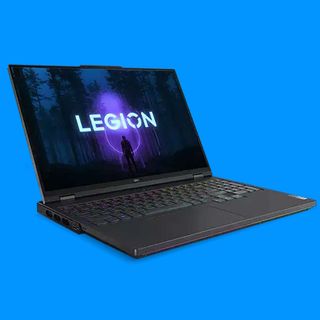
The best overall
The Lenovo Legion Pro is the best gaming laptop from all the new machines we've tested of this generation. It's also the best 16-inch notebook, too, which is our new favorite form factor, offering the best screens we've seen in modern laptops.
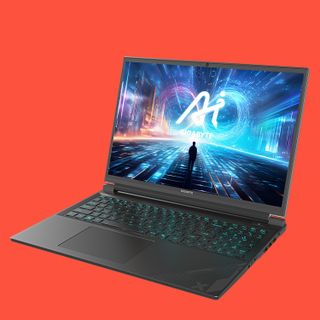
The best budget
Gigabyte has created the most affordable, most powerful budget gaming laptop around. It's a great mix of value and gaming silicon for its 13th Gen CPU and RTX 4060.
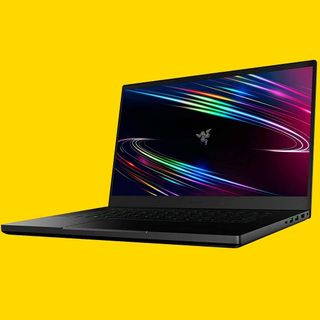
The best 15-inch
The Blade 15 is that holy grail of gaming laptops. MacBook aesthetic and desktop gaming prowess. They're lovely things of brushed black aluminium and with some seriously powerful gaming hardware baked inside.

The best 14-inch
If a 15-inch machine is too big for your lap, then the G14 is the notebook for you. It's a lovely little device with a gorgeous screen, solid specs, and tons of connectivity. The new design for 2024 is absolutely gorgeous, too.
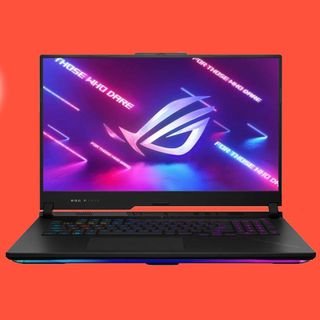
The best 17-inch
The big-boi Asus Scar 17 brings us the latest AMD mobile processor with 3D V-cache, which it turns out is also the best laptop CPU that you can buy today. Paired with the RTX 4090 and a 17-inch screen it's a beast.
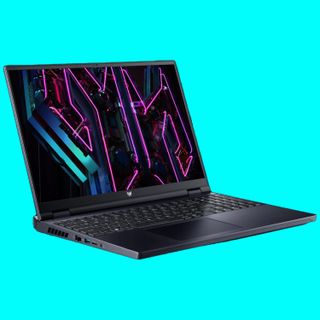
The best laptop screen
Not only is this laptop fitted with a 240Hz QHD+ panel, it's also utilised Mini LED technology to make it pop. Seriously, it's absolutely gorgeous, and the Acer's price tag isn't too egregious for the inclusion.
Recent updates
Updated June 20 to remove an unnecessary navigation element, and check through our current recommendations. All of our top picks remain the same.
The best gaming laptop









Specifications
Reasons to buy
Reasons to avoid
Our favorite config:
Lenovo Legion Pro 7i (Gen 8)| Intel Core i9 13900HX | Nvidia RTX 4080 (150W) | 32GB DDR5 | 1TB NVMe SSD
The RTX 4080 model is our absolute favorite version of the Legion Pro 7i. That's the same one we've tested ourselves. This awesome chassis delivers enough headroom for the RTX 4080 to shine in games, and it often matches laptops with more restrained RTX 4090 GPUs inside. Tough to argue with that.
We tested: Intel Core i9 13900HX | Nvidia RTX 4080 (150W) | 32GB DDR5 | 1TB NVMe SSD
✅ You want serious gaming power: The RTX 4080 mobile GPU is a fantastic gaming chip, offering stellar performance on the native 1600p screen. And that Intel CPU is an absolute monster of processor, too.
✅ You value good value: Most of the next-gen laptops we've tested so far have had an almost punitive price premium attached to them, which makes them hard to justify. The Legion Pro 7i, however, can offer performance as high as a Razer Blade 16 with an RTX 4090 inside it, while coming in $2,000 cheaper.
✅ You want a grown-up laptop: The Lenovo chassis is smart, stylish, and doesn't come with any over-the-top 'gamer' aesthetic bull.
❌ You need looong battery life: The biggest downside with the Legion Pro 7i is its gaming battery life is one of the weakest we've seen. Given the high-powered GPU that's maybe not a surprise, and realistically you are going to gaming plugged in for the most part.
❌ You're after something super portable: The 16-inch chassis isn't that much bigger than a standard 15-inch machine thanks to the thin bezels around the screen, but they don't offer the same level of portability as the excellent 14-inch options around today.
🪛 The Legion Pro 7i is a stunning gaming laptop that really cements Lenovo's place in the top tier of gaming machines. The performance and value of the high-end components inside this laptop means it can rival far more expensive systems without sounding like a jet turbine to do so. It's both the best gaming laptop, and the best 16-inch laptop right now.
The Lenovo Legion Pro 7i is the best 16-inch gaming laptop, and since 16-inch is the best form factor for a gaming laptop, it is therefore the best gaming laptop overall as well. Win and win.
It's a machine that comes in at a price point that makes the rest of the high-end RTX 40-series look even more ridiculous on their lofty $4,000+ perches. And its the RTX 4080 model that has us impressed in testing, offering the sort of gaming performance that has me questioning why anyone would want an RTX 4090 machine.
The Legion Pro 7i runs its RTX 4080 at a 150W TGP, which is the effective maximum of the GPU. Though manufacturers are given an extra 25W leeway to bulk up their own specs if they feel they can push a little extra juice through their own systems. Lenovo hasn't gone down that route, the Legion Pro knows what it likes, and it likes the 150W TGP and no more.
This Gen8 machine uses a 13th Gen Intel chip—the Core i9 13900HX. If, like me, you were to assume that would essentially be a slightly higher clocked version of the Core i9 13900H Asus has used in its excellent Zephyrus M16 gaming laptop, then you'd be wrong.
There are obviously similarities, they are both using the same essential Raptor Lake architecture after all. But the HX isn't just quicker, it has eight Performance cores, vs the 13900H's six, and twice the number of Efficient cores taking its total up to 24 cores of processing grunt. The clock speeds remain the same, with 5.4GHz boost clocks, though inevitably the bigger chip has a higher base TDP of 45W. Which will go some way to explaining the terrible battery life you get when gaming.
Because, it has to be said, Lenovo machines are universally terrible at gaming away from a plug socket. I've tested a host of Legion laptops over the past year, and to a machine they all suffer from very poor gaming battery life, though are admittedly still performance heroes when they're powered from the wall. Realistically, you're going to do most of your PC gaming when you're plugged in, largely because all gaming laptops have pretty terrible gaming battery life metrics, so how much of a dealbreaker that is for you depends on how mobile you want to be when playing Helldivers 2.
The only other place I'm feeling a little comparatively conflicted with the Lenovo is in the screen. I've been spoiled by gorgeous mini-LED panels in recent times, most recently by that in the Lenovo Legion 9i, which makes the standard backlighting in this 1600p 240Hz screen feel a little lacklustre.
It's still a good screen, and it does have the 16:10 aspect ratio I never knew I needed in a gaming laptop until I started using them on the regular. The 2560 x 1600 native resolution is a great match for the 16-inch screen size the Legion Pro comes rocking.
The Legion Pro 7i manages to outperform both the Razer Blade 16 and the Asus Zephyrus M16 regularly, at both 1080p and 1440p resolutions. Only the chonky boi MSI Titan GT77 is able to utilise its RTX 4090-ish GPU to its fullest potential. And then at the expense of acoustics and potentially your sanity.
Because that's the thing I keep coming back to when I'm looking at this Lenovo machine. It's not the prettiest, but it sure can smash out them high gaming frame rates. And does it for around $2,000 less than the Blade 16.
The other thing that makes me love the Legion Pro 7i so well is that it's been on sale for the last eight months or so, making the RTX 4080 version around the $2,000 mark and sometimes even below that. It's a grown-up looking laptop, with serious gaming performance behind it. And it's serious good value to boot.
Read our full Lenovo Legion Pro 7i (Gen 8) review.
The best budget gaming laptop








Specifications
Reasons to buy
Reasons to avoid
Our favorite config:
Gigabyte G6X (2024) | Intel Core i7 13650HX | Nvidia RTX 4060 | 32GB DDR5-4800 | 1TB SSD
With the specs we'd expect for this sorta money stuffed inside a well-to-do chassis, there's no arguing with the Gigabyte G6X as a great budget gaming laptop. You could save a bit of cash on the 16GB model, however. You'd get by just fine in games without more RAM, and you could always upgrade at a later date.
We tested: Intel Core i7 13650HX | Nvidia RTX 4060 | 32GB DDR5-4800 | 1TB NVMe SSD
✅ You want solid 1080p gaming performance: With a decent RTX 40-series GPU at its core and a speedy 1080p screen, the G6X offers a simple, straightforward gaming experience.
✅ You want plenty of storage: The spare NVMe SSD slot within the G6X is easily accessed. Just a couple of screws to expand your storage even further.
❌ You want silence: The fan noise on the G6X is noticeable. Like, really noticeable. That's most gaming laptops, though this is definitely not on the quieter end of the spectrum.
❌ You like a detailed screen: The 16:10 aspect ratio helps a bunch here, but it's still only just over a traditional 1080p resolution. That means a lot less room compared to 1440p or 4K.
🪛 The Gigabyte G6X (2024) might not make a major splash with its standard specification, but it's a healthy balance of performance, power and price. That's what counts for the best budget gaming laptop.
The best budget gaming laptop is the Gigabyte G6X (2024). It takes the place of the Gigabyte G5 we had in this spot previously, mostly because it offers more affordable gaming performance but with newer, improved parts inside.
The model we reviewed contains a Core i7 13650HX, which is not actually Intel's most recent mobile gaming processor generation. That's the 14th Gen. However, that's an omission we're happy to make. They're mostly the same and the six P-cores and eight E-cores on this Core i7 are plenty for our needs.
That chip is combined with a 105 watt RTX 4060—that's actually a large power budget for this GPU, and that shows in the performance it delivers, as evidenced in the benchmark charts below. What's more, it's a small dose faster than the outgoing Gigabyte G5 KF we've replaced in this spot—those hardware changes do count for something in games.
Let's talk about the screen. It's a full 16 inches in size, with a 16:10 aspect ratio, 1920 x 1200 pixels, and a refresh rate of 165 Hz. It's pretty darn good, in other words.
Importantly, that screen is a good fit for the hardware beneath it. Though it does suffer from a bit of the case of the blands—that is to say, it's a bit dull and overly dark. These budget laptops often tend to suffer this fate and the G6X is no different to its predecessors on this point. Ultimately, we'd call it "perfectly average."
The noise from the fans when they're running at full bore is also quite average, which means this laptop is rather loud. That's just part of the parcel with a gaming laptop, but more so these affordable models.
The design of this laptop is pretty standard stuff, too. Though it's decisively less 'gamery' than some. A single zone of RGB LEDs illuminates the keyboard and there's room for a reasonable big trackpad. Within the chassis, you can easily access the spare NVMe slot should you wish to bolster your storage above 1TB, which you probably will, and this machine comes with two DIMM slots. In our review model, these were accommodating 32GB of DDR5-4800, though you could save some cash on the 16GB model and get by in games just fine. It wouldn't be difficult to swap out for a higher capacity kit down the line.
Overall, the Gigabyte G6X offers exactly what we ask for in a budget gaming laptop. You could happily game on one right out of the box, though it's an easily upgradeable platform if required.
Read our full Gigabyte G6X (2024) review.
The best 15-inch gaming laptop




Specifications
Reasons to buy
Reasons to avoid
Our favorite config:
Razer Blade 15 | Intel Core i7 12800H | Nvidia RTX 3070 Ti
You can, of course, go for the old big boi—the RTX 3080 Ti—but in this slimline chassis, the Nvidia RTX 3070 Ti will deliver fantastic frame rates, even at the 1440p resolution of the gorgeous 240Hz OLED screen. You also get a 1TB PCIe 4.0 NVMe SSD and 16GB of dual-channel DDR5 RAM at a blistering 4,800MHz.
We tested: Intel Core i7 13800H | Nvidia RTX 4070 | 16GB DDR5-5200 | 1TB NVMe SSD
✅ You want a premium build: Razer's Blade 15 is as close as you're going to get to a gaming MacBook aesthetic. Well, apart from that big green logo on the lid...
✅ You want options: There are a huge number of Blade 15 configurations out there, going from the Base to the Advanced systems, with a variety of price points.
✅ You want battery life: If we're honest, game time away from a plug is always limited in a modern gaming laptop. But the Blade 15, even with the RTX 3080 in it, is the best performing on that front of all the machines in this list.
❌ You need peak plugged-in performance: That slimline chassis is an essential part of the Blade 15's charm but is also why Razer limits the TGP of the graphics cards in them.
❌ You're on a budget: Razer's gaming laptops are not cheap, and always come with a price premium on top of the likes of Asus or Acer's more affordable machines.
🪛 The Razer Blade 15 has long been our favorite 15-inch gaming laptop. It mixes style with performance and a wealth of screen real estate, and comes in a wide variety of configurations. Now, those configs may not necessarily suit every budget because of the Razer price premium, but if you're willing to pay for the absolute best the Blade 15 deserves to be at the top of your list.
The latest spin of the Razer Blade 15 once again improves on one of the greatest gaming laptops ever made, and the best 15-inch gaming laptop today. It has the same gorgeous CNC-milled aluminum chassis as its predecessor, only this time it can house one of Nvidia's latest RTX 40-series GPUs and an Intel 13th Gen Core i9 CPU.
Though it's days may well be numbered. Right now, it doesn't look like Razer is going to release a new Blade 15 with the 14th Gen Intel chips inside it, which could indicate that this is the last run for the venerable machine.
In a way, that's understandable given the Blade 16 isn't much bigger yet can house a larger screen. But, importantly, it is thicker. Yes, the Blade 16 is a fair bit chonkier than the older Razer chassis, and I very much prefer the more svelte, older design.
Missing out on the 14th generation of Intel's mobile Core CPUs isn't an issue in real terms, however, as the Raptor Lake Refresh is just that, a mild refresh of the 13th Gen chips. So, with the current Razer Blade still sporting up to the RTX 4070 as its GPU component it still represents the best 15-inch gaming laptop you can buy.
As hinted at before, that scale does limit the screen. In the Blade 15 you have a QHD 240Hz panel, so that's a 2560 x 1440 native resolution. I mean, that's still great and all, but I've been spoiled by the 16:10, 1600p mini-LED displays modern laptops can offer. It does also mean the Blade 15 has a fairly sizeable 'chin' by which I mean a large bezel along the bottom side of the panel.
I'd maybe want the screen to be brighter, but it's certainly responsive and that 240Hz refresh makes it feel super slick. It's sharp, too, with that 1440p res squished down to only 15-inches of real estate.
The gaming performance certainly isn't impacted by the lack of the latest CPU, with the 115W RTX 4070 proving a very capable gaming GPU, even in the confines of the slight Blade 15 chassis. The RTX 4070 inside our latest review machine easily outpaces the mobile RTX 3080 in the last version we tested of Razer's 15-incher, and that's without the added benefits of DLSS 3 and Frame Generation.
The issue, as ever with Razer gaming laptops, is the price premium. Our pick for the best gaming laptop, the 16-inch Lenovo Legion Pro 7i is consistently much cheaper than the top RTX 4070 SKU of the Blade 16 and that comes with a much faster RTX 4080. It isn't quite as nice a device, given the unibody aluminium chassis of the Razer machine, but if you're on a tight budget it's hard to recommend the Blade.
But it is a lovely device, even if it has barely changed in the past few years. It's also pretty well connected, with a pair of Thunderbolt 4 ports and three USB 3.2 Type-A connections, too. There's also the requisite combined 3.5mm audio jack and a full HDMI 2.1 output.
For me, it's still the best 15-inch gaming laptop on the scene and as ever really does nail that gaming MacBook aesthetic, which has always made the Blades such a hit.
The best 14-inch gaming laptop








Specifications
Reasons to buy
Reasons to avoid
Our favorite config:
Asus ROG Zephyrus G14 (GA403UI) | AMD Ryzen 9 8945HS | Nvidia GeForce RTX 4070
The model we looked at review is the best configuration for most PC gamers. The RTX 4070 is a powerful GPU that won't age too quickly and all current models of the 2024 Zephyrus G14 come with the Ryzen 9 chip and 32GB of LPDDR5X. That includes the cheaper models, too, like this RTX 4060-powered G14.
We tested: AMD Ryzen 9 8945HS | Nvidia GeForce RTX 4070 | 32GB LPDDR5X | 1TB NVMe SSD
✅ You want a laptop for work and play: The G14 is good looking enough to carry around to your very important meetings yet still has plenty of performance in-game.
✅ You want an OLED screen: It's all the rage nowadays, but the G14's OLED panel makes everything pop on-screen. It makes taking pictures of the screen easier, too. Games naturally look amazing.
❌ You would like the option to upgrade: The G14 sacrifices an upgrade path for its plucky new shell. That means soldered memory and just a single SSD NVMe slot. Darn.
🪛 Asus' Zephyrus G14 is deservedly one of the best gaming laptops around today. The newer 2024 model comes with many improvements over the previous one, including a lovely all-metal chassis and OLED panel. It's quite an upgrade on an already impressive machine.
The Asus ROG Zephyrus G14 (2024) is the best 14-inch gaming laptop, taking the spot from the Asus ROG Zephyrus G14 (2023). That might make it seem like the newer model was a shoe-in for the top position in this guide, but actually there have been some serious design changes and improvements made to the newer model. Those which make it entirely deserving of a top spot all on its own.
The G14 2024 comes with a new all-metal chassis that is quite simply lovely. It's the chassis that has finally convinced a few of us in-office to look beyond the Razer Blade, which is famed for its all-metal construction. The metal build on the Zephyrus feels great, looks great, and importantly trims down the footprint of the Zephyrus G14 to an even more travel-friendly size. It's just 1.63 cm at its thickest point.
Now before we get to the other good bits, it's worth saying that the shrunken form factor has led Asus to sacrifice the single removable SO-DIMM slot found on previous years' G14 models. There's no longer an upgrade path for the memory. That said, 32GB of LPDD5X is included as standard on all the available models at time of writing. That should see most people through for years to come, but I understand some users won't like the lack of options here. Also while you can replace the SSD, there's only one NVMe slot available, which can make transfers a pain, as you'd need to make a complete switch, SSD for SSD.
If you're still with me, let's talk one of the G14's best features: the OLED screen. If it looks good in the gallery images above, it looks even better in-person. Excellent breadth of colour and contrast make for a stunning display for gaming. The increased resolution of 2880 x 1800 and slightly larger aspect ratio at 16:10 help to prevent that compact screen from feeling too closed-in.
A surprisingly plus point on the G14 are its speakers, which have seen significant improvement year-on-year. There are now four tweeters and two woofers built into the G14, split on either side of the keyboard, and they sound genuinely good. Our Andy was also impressed with the Zephyrus G16's speakers, which have similarly been zhushed up with the latest laptop.
For a compact 14-inch gaming laptop, which remains one of the more desirable form factors around, there's no beating the Asus ROG Zephyrus G14 2024.
Read our full Asus ROG Zephyrus G14 (2024) review.
The best 17-inch gaming laptop









Specifications
Reasons to buy
Reasons to avoid
Our favorite config:
Asus ROG Strix Scar 17 (2023) | AMD Ryzen 9 7945HX3D | Nvidia RTX 4090 | 32GB DDR5-4800 | 1TB SSD
The Scar 17 is one of the fastest, most powerful gaming laptops I've ever tested, especially now it's been updated with the ultimate mobile gaming CPU, the new AMD X3D chip. And if that's all you care about this is the machine for you. For me, the ergonomics make it feel like a second-tier system despite the fact it can outperform far more expensive gaming laptops. Asus giveth, and Asus taketh away.
We tested: AMD Ryzen 9 7945HX and 7945HX3D | Nvidia RTX 4090 | 32GB DDR5-4800 | 1TB SSD
✅ You want the most powerful gaming laptop: The combination of AMD's latest Ryzen mobile chip and Nvidia's RTX 4090 makes this a real frame rate spitting monster of machine.
✅ You want a desktop replacement: The large 17-inch screen and 1440p resolution gives you a lot of space to work on without taking up the same space as a full desktop+monitor setup.
❌ You want good battery life: at just 55 minutes in gaming terms, the battery life is among the worst I've ever tested.
❌ Ergonomics is key to you: the typing experience isn't great with such a defined chassis edge that digs into your forearms, and the trackpad is horrible.
❌ You like a quiet life: it gets LOUD.
🪛 The Asus ROG Strix Scar 17 uses AMD's latest Dragon Range CPU, and it knocks even the most powerful Intel laptop chips off the top perch. Combined with the RTX 4090 that makes this a combination for gaming and productivity that's hard to beat at this price.
As well as being the best 17-inch gaming laptop available today, Asus' ROG Strix Scar 17 X3D is also probably the fastest machine around, too. The latest AMD Zen 4 chips are the top mobile number-crunchers you can buy, and the addition of the cache-heavy Ryzen 9 7945HX3D gives this big boi system sometimes ultimate gaming performance.
It's a shame that it's currently restricted to a single model, however, because the Scar 17 X3D is the only place you'll find AMD's finest. This is a really impressive gaming laptop that makes the ridiculous MSI Titan look even more dumb. The Asus is near $2,000 cheaper and outperforms it in practically every metric that matters.
This is also one of the most affordable RTX 4090 machine I've seen in this generation, so I guess in some regards being seen as a lesser light in laptops terms has maybe served this AMD-powered system after all. It's also one of the best performing RTX 4090 machines I've seen, which is a double whammy that makes it difficult to recommend any of the rest.
You absolutely do need to be plugging it in because, despite that big 90Wh battery, it really doesn't last long away from a wall socket. If you're gaming, consider the battery like some sort of uninterruptible power supply rather than something to rely on for long.
The special X3D version of the laptop, still only machine to host the ultimate mobile gaming CPU, AMD's Ryzen 9 7945HX3D, is identical to the standard Scar 17 laptop, with its Ryzen 9 7945HX chip, but the updated version comes with the 3D V-cache technology which stacks more cache memory atop one of the Zen 4 compute blocks.
And that can make a huge difference to gaming performance specifically.
The nominal clock speed of the chip is just 2.5GHz, with a boost clock of 5.4GHz. And that's actually a reliable boost, too, because I was reliably seeing the chip ramping up to that level during single-core loads in my testing. In heavily multithreaded loads I was seeing a regular 4.7GHz, which is no mean feat. I repeat, we are talking about 16 full Zen 4 CPU cores here.
The most powerful Intel mobile chip we've seen has been the Core i9 13980HX in the Asus Strix Scar 16, this machine's smaller sibling. That's a 24-core processor with 32-threads, but remember Intel is mixing eight of its Performance cores with 16 Efficient cores to hit its thread target. And that shows in the CPU benchmarks.
I keep coming back to my irredeemably negative experience of using the MSI Titan machine. That's an offensively chonky, loud machine that still only just delivers the sort of performance this Asus Scar 17 can. And that means as much as the ergonomics of this big boi ROG laptop don't sing to me, the raw performance absolutely does.
It's also my first taste of AMD's latest range of laptop processors, and it's certainly pleasing my techie palate. The red team is really nailing mobile chips at the moment, with the power of this Ryzen 9 7945HX, the gaming prowess of the Ryzen 9 7945HX3D, and the efficiency and performance of its Z1 Extreme, née Ryzen 7 7840U, that is gracing the excellent ROG Ally handheld gaming PC et al.
Read our full Asus ROG Strix Scar 17 (2023) review.
Read our full AMD Ryzen 9 7945HX3D testing.
The best gaming laptop screen





Specifications
Reasons to buy
Reasons to avoid
Our favorite config:
Acer Predator Helios 16 | RTX 4080 | Core i9 13900HX | 16GB DDR5-5600 | 1TB SSD | Mini LED
Considering this laptop is quite a bit cheaper than its RTX 4080 competition, it doesn't feel that pared back for it. In fact, this laptop has one of the most gorgeous screens we've seen on a mobile device yet, powered by Mini LED. Its performance is a little off the pace of the rest of the pack, but it's still a high-end laptop that can deliver immense frame rates.
We tested: Intel Core i9 13900HX | Nvidia RTX 4080 | 16GB DDR5 | 1TB NVMe SSD
✅ You value a gorgeous screen: The Acer Predator's Mini LED screen is stunning. This new panel technology really works wonders on a smaller laptop screen.
✅ You want a large laptop: The 16-inch form factor is a fantastic mix of screen and size.
❌ You need top performance: This isn't the fastest RTX 4080 laptop we've tested, though it's not too far off the pace.
❌ You need a portable laptop: While this 16-inch laptop is fairly compact considering its screen size, it's still very large, heavy, and comes with a huge power brick.
🪛 The Mini LED screen on this laptop is absolutely stunning. It's bright when it needs to be, but black levels are great and you can pick out finer details in the murkiest of images. The foibles of Mini LED aren't as pronounced in such a small screen as this, either. While you will find this screen on the likes of the Asus ROG Zephyrus M16, this Acer laptop is usually far cheaper.
The Acer Predator Helios 16 isn't the fastest gaming laptop with an Nvidia GeForce RTX 4080 stuffed inside it, but it does have many redeeming qualities. You should absolutely look elsewhere if you want pure performance, but for the raw quality of the Mini LED screen on this laptop and its comparatively affordable price tag, there's something to really like here. This is hands-down the gaming laptop with the best screen you can buy.
Let's talk about the screen, then. It's one of the Helios 16's strongest features. It's a Mini LED panel with 1000 zones, and those zones are delivered by miniature LEDs packed together behind the screen, rather than your more traditional diodes. The extra zones aim to produce brighter peaks without washing out the darker areas of a picture. Admittedly, Mini LED is no microLED, but over a traditional LED screen I'll take it any day.
The screen on the Helios 16 looks lush. The colours are rich, vibrant, and it doesn't struggle to deliver a punchy image like some cheaper laptops. Crank the brightness right the way up and the image is super impressive, both on the desktop and in games.
I've been playing some Metro Exodus Enhanced Edition and this display is so, so good at showing off areas with bright flames erupting out of the darkness, or rays of light breaking through windows or a hole in the roof.
This laptop's Mini LED screen really is a highlight—an enviable 240Hz and 16:10 (2560 x 1600) design.
But does it make up for the performance deficit I'm sometimes seeing? That's tough, because the Helios can hold its own simply due to its overpowered components. The RTX 4080 and Intel Core i9 13900HX are a mighty combo, but game performance is a bit of a mixed bag versus other gaming laptops with similar spec sheets.
The overall chassis construction is a sleek black design. It's a little plasticky, but it can be forgiven for a generally pretty smart look. It falls a little short of the Razer Blade 16's professional-looking shell, and it's not quite as flashy as the Strix Scar 16, but with plenty of ports my first impression out of the box was certainly a good one.
The power brick isn't my favourite, however. It's pretty massive, weighs a lot, and I wouldn't want to lug it around in my backpack all day alongside this already 2.9kg machine.
But, for the money, it's much easier to look past the performance of the Helios and instead at the larger package. The silicon is there, the quality is there, and the screen is 100% there.
Read our full Acer Predator Helios 16 review.
How we test gaming laptops
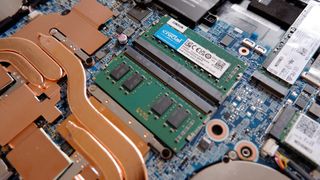
We dedicate a lot of time to our gaming laptop testing to ensure that we're capturing all the objective performance data we need, and that we have the opportunity to catalogue the subjective experience of actually using a given device. Gaming laptops are expensive items, and you're right to do your research before buying, so we're passionate about making sure we're able to tell you what a notebook is like to use as well as how powerful it is.
The objective side demands that we put each system through our standard benchmarking suite. That allows us to confidently compare systems on directly referential basis. We test the raw performance of the CPU, GPU, and storage components of a system using the Cinebench R23 and Blender 3.3.0 benchmarks to get a bead on the processor and graphics card rendering performance. We also use X264 to test the encoding power of a laptop CPU.
3DMark's Storage test and the Final Fantasy XIV Endwalker benchmarks are a great way to highlight the gaming performance of a laptop's storage subsystem. And 3DMark also gives us a way to get a synthetic read on both the gaming and ray tracing performance of a GPU.
We also put a system through gaming performance tests of Cyberpunk 2077, F1 22, Hitman 3, Horizon Zero Dawn, and Metro Exodus Enhanced, at both 1080p—so we have a base reference score no matter what a system's native resolution is—and at 1440p and 4K where that is available.
We also run some experiential tests on a system's panel—we use Lagom's LCD test images to help discern things like black levels and white saturation as well as general desktop and gaming testing to see how it feels to use a laptop's screen.
It's also important to check the actual gaming frequency of both a laptop's GPU and CPU, to see how a given slice of silicon performs given the thermal constraints of different notebook chassis.
We then use PCMark 10's gaming battery life test to give us a comparative battery life metric.
Personally I also like to always write a review of a given laptop on the machine itself. That gives you a good feel about both the trackpad and keyboard, as well as the ergonomics of the chassis' design, too.
We then bring all of that subjective and objective data together alongside the price to decide how well each machine we test stands up against all the other gaming laptops we've looked at in our combined decades of PC hardware testing.
Also tested
The above gaming laptops are the ones we recommend you spend your hard-earned cash on if you're looking for a new machine, but aren't the only ones we've reviewed. We regularly test different gaming laptops to make sure we're recommending only the absolute best.
These are the machines we've looked at recently that didn't make the cut...
HP Omen 16 | Intel Core i7 13700HX | Nvidia RTX 4080 | 32GB DDR5 | 2TB SSD
The HP Omen 16 laptop fails to deliver the expected level of performance and value when compared to its counterparts in the 16-inch RTX 4080 laptop category. It falls short because of its lackluster CPU and GPU performance, higher price point, bloatware issues, and subpar gaming experience. Not a great combo, for sure.
PC Gamer score: 68%
Read our full HP Omen 16 review.
Asus ROG Strix Scar 16 | Intel Core i9 13980HX | Nvidia RTX 4080 | 16GB DDR5-4800 | 1TB SSD
The ROG Strix Scar 16 (2023) model comes in hot, not just in terms of impressive gaming performance but inevitably temperature-wise, too. While it sometimes matches the more expensive gaming laptops in this year's lineup, the rest of the spec lets it down.
PC Gamer score: 70%
Read our full Asus ROG Strix Scar 16 (2023) review.
MSI Cyborg 15 | Intel Core i7 12650H | Nvidia RTX 4060 | 16GB DDR5-4800 | 512GB SSD
While quiet and cool, the MSI Cyborg 15 lacks the oomph expected of an RTX 4060-powered gaming laptop. Frustrating software and a lack of upgradeability make for a clumsy attempt at a competitively priced machine.
PC Gamer score: 50%
Read our full MSI Cyborg 15 review.
MSI Titan GT77 HX | Intel Core i9 13950HX | Nvidia RTX 4090 | 64GB DDR5-4000 | 4TB SSD
For this much money I want my machine to feel special, not like it's struggling to cope with the top-rated hardware baked inside it. The MSI Titan feels like a gaming laptop running at the ragged edge of performance and decency. Its excess feels vulgar, not special, and I simply cannot recommend it on raw performance alone.
PC Gamer score: 53%
Read our full MSI GT77 HX review.
Razer Blade 16 | Intel Core i9 13950HX | Nvidia RTX 4090 | 32GB DDR5-5600 | 2TB SSD
This top Blade 16 spec delivers outstanding performance, in both gaming and productivity terms, and retains the classic Blade styling. It also comes with the best laptop screen I've ever used. But inconsistencies in the experience, and a punitive price tag makes it difficult to recommend.
PC Gamer score: 76%
Read our full Razer Blade 16 review.
Alienware X14 | Intel Core i7 12700H | Nvidia RTX 3060 6GB | 16GB PLDDR5-5200 | 1TB SSD
An aesthetically pleasing laptop with solid 1080p gaming performance that falters only in the face of its more aggressively-priced competitors. Still, if you've got the cash, this is a respectable choice of hardware.
PC Gamer score: 78%
Read our full Alienware X14 review.
Alienware m17 R5 AMD | AMD Ryzen 9 6900HX | AMD Radeon RX 6850M XT | 1080p | 240Hz |
The config I suggest is a little less overkill than what was reviewed. Instead of the 4K display, a speedier 1080p 240Hz display is a better fit in order to maximize frames on some of your favorite games and save a couple of bucks.
PC Gamer score: 83
Read our full Alienware m17 R5 review.
Razer Blade 14 | AMD Ryzen 9 6900HX | Nvidia RTX 3070 Ti | 16GB DDR5-4800 | 1TB SSD
Not a lot has changed since the first-gen Blade 14, and maybe this RTX 3070 Ti spec is too expensive for me, but it does make for a stunning, small form factor gaming laptop. And I am absolutely sold on the 1440p screen at the 14-inch scale, too. It's pin-sharp, bright, and colourful. The price premium is tough to swallow in relation to the similarly performing Asus G14 and for that reason, the RTX 3060 Blade 14 still feels like the better value, better-balanced machine to me.
PC Gamer score: 83%
Read our full Razer Blade 14 review.
MSI Stealth GS66 | Intel Core i9 12900H | Nvidia RTX 3070 Ti | 32GB DDR5-4800 | 2TB SSD
A very, er, insistent cooling array certainly wants you to know the Stealth GS66 is doing something. And what it does, it does pretty well, but the pricing and the strange spec choice, combine with the gaming volume to make it a tough machine to love or to recommend.
PC Gamer score: 73%
Read our full MSI Stealth GS66 review.
Corsair Voyager a1600 | AMD Ryzen 9 6900HS | AMD Radeon RX 6800M | 32GB DDR5-4800 | 2TB SSD
The Corsair Voyager makes for an intriguing laptop for streamers, but it's isn't quite there yet when it comes to functionality and polish. There are some neat features on display—including the best laptop keyboard you'll ever use—but it's a too pricey for the performance on offer.
PC Gamer score: 72%
Read our full Corsair Voyager a1600 review.
Gigabyte Aorus 17 XE4 | Intel Core i9 12700H | Nvidia RTX 3070 Ti | 16GB DDR4-3200 | 1TB SSD
The Gigabyte Aorus 17 XE4's strong core specification focuses on what matters to gamers, although it's undermined by its noisy operation and its sheer sizes isn't for everyone.
PC Gamer score: 84%
Read our full Gigabyte Aorus 17 XE4 review.
Acer Nitro 5 | AMD Ryzen 7 5800H | Nvidia RTX 3070 | 16GB DDR4-3200 | 1TB SSD
The Acer Nitro 5 doesn't look like much, but it's a modestly powerful mid-range gaming laptop that'll check a lot of boxes for you. For others, it's a low-key laptop that they wouldn't be embarrassed to take out in public to sneakily play video games at a coffee shop.
PC Gamer score: 83%
Read our full Acer Nitro 5 review.
How to spot the best deal
Where are the best gaming laptop deals?
In the US:
- Amazon - RTX 3050 laptops from Acer and Dell starting at $650
- Walmart - cheap Gateway laptops. Remember them?!
- B&H Photo - up to $500 off Lenovo, Asus, & MSI gaming laptops
- Target - sub-$1,000 gaming laptops
- Staples - up to $300 off MSI gaming notebooks
- Lenovo - $1,000+ discounts on Legion laptops
- Newegg - $500+ off RTX 30 series gaming laptops
- Best Buy - save up to $500 on gaming laptops
- Microsoft - up to half price on last-gen laptops
- Dell - save over $300 on Dell and Alienware gaming laptops
In the UK:
- Amazon - save on Asus, Razer, and Acer gaming laptops
- Dell - Alienware and Dell Gaming laptops with up to £500 off
- HP - Save £450 on HP Omen laptop powered by an RTX 3070 Ti
- Overclockers - gaming laptop deals and components
- Ebuyer - RTX 3060-powered gaming laptop for just £799.98
- Very - save up to £450 on RTX 3070 MSI gaming laptops
- Box - Just £1,916.99 for a Razer Blade 15 Base gaming laptop
- Scan - up to £400 off gaming laptops from different manufactures
What's the most important gaming laptop component?
When it comes to gaming, the obvious answer is the graphics card, but that's where things have gotten a little more complicated recently. With GPU performance now so dependent on cooling, you have to pay attention to what wattage a graphics card is limited to and what chassis it's squeezed into.
As we said at the top, an RTX 4080 confined in an 18mm chassis will perform markedly slower than one in a far chunkier case with room for higher performance cooling.
Should I worry about what the CPU in a gaming laptop is?
That really depends on what you want to do with your laptop. An 8-core, 16-thread AMD Ryzen chip will allow you to do a whole load of productivity on the road, but honestly, it will have little benefit in gaming. That's one of the reasons Intel has launched its Tiger Lake H35 chips; they're quad-core, 8-thread CPUs, but they're clocked high to deliver high-end gaming performance when paired with something like the RTX 4070.
What screen size is best for a gaming laptop?
This will arguably have the most immediate impact on your choice of the build. Picking the size of your screen basically dictates the size of your laptop. A 13-inch machine will be a thin-and-light ultrabook, while a 17-inch panel almost guarantees workstation stuff. At 15-inches, you're looking at the most common size of the gaming laptop screen.
Are high refresh rate panels worth it for laptops?
We love high refresh rate screens here, and while you cannot guarantee your RTX 4060 will deliver 300 fps in the latest games, you'll still see a benefit in general look and feel running a 300Hz display.
Should I get a 4K screen in my laptop?
Nah. 4K gaming laptops are overkill; they're fine for video editing if you're dealing with 4K content, but it's not the optimal choice for games. The standard 1080p resolution means that the generally slower mobile GPUs are all but guaranteed high frame rates, while companies are slowly drip-feeding 1440p panels into their laptop ranges.
A 1440p screen offers the perfect compromise between high resolution and decent gaming performance. At the same time, a 4K notebook will overstress your GPU and tax your eyeballs as you squint at your 15-inch display.
The biggest gaming news, reviews and hardware deals
Keep up to date with the most important stories and the best deals, as picked by the PC Gamer team.

Dave has been gaming since the days of Zaxxon and Lady Bug on the Colecovision, and code books for the Commodore Vic 20 (Death Race 2000!). He built his first gaming PC at the tender age of 16, and finally finished bug-fixing the Cyrix-based system around a year later. When he dropped it out of the window. He first started writing for Official PlayStation Magazine and Xbox World many decades ago, then moved onto PC Format full-time, then PC Gamer, TechRadar, and T3 among others. Now he's back, writing about the nightmarish graphics card market, CPUs with more cores than sense, gaming laptops hotter than the sun, and SSDs more capacious than a Cybertruck.
- Jacob RidleySenior Hardware Editor
Most Popular



